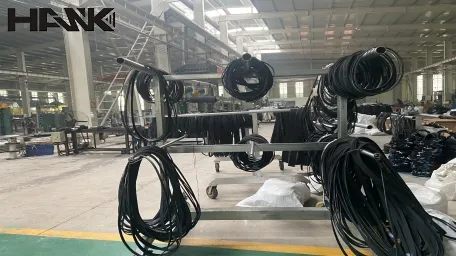- Arabic
- French
- Russian
- Spanish
- Portuguese
- Turkish
- Armenian
- English
- Albanian
- Amharic
- Azerbaijani
- Basque
- Belarusian
- Bengali
- Bosnian
- Bulgarian
- Catalan
- Cebuano
- Corsican
- Croatian
- Czech
- Danish
- Dutch
- Afrikaans
- Esperanto
- Estonian
- Finnish
- Frisian
- Galician
- Georgian
- German
- Greek
- Gujarati
- Haitian Creole
- hausa
- hawaiian
- Hebrew
- Hindi
- Miao
- Hungarian
- Icelandic
- igbo
- Indonesian
- irish
- Italian
- Japanese
- Javanese
- Kannada
- kazakh
- Khmer
- Rwandese
- Korean
- Kurdish
- Kyrgyz
- Lao
- Latin
- Latvian
- Lithuanian
- Luxembourgish
- Macedonian
- Malgashi
- Malay
- Malayalam
- Maltese
- Maori
- Marathi
- Mongolian
- Myanmar
- Nepali
- Norwegian
- Norwegian
- Occitan
- Pashto
- Persian
- Polish
- Punjabi
- Romanian
- Samoan
- Scottish Gaelic
- Serbian
- Sesotho
- Shona
- Sindhi
- Sinhala
- Slovak
- Slovenian
- Somali
- Sundanese
- Swahili
- Swedish
- Tagalog
- Tajik
- Tamil
- Tatar
- Telugu
- Thai
- Turkmen
- Ukrainian
- Urdu
- Uighur
- Uzbek
- Vietnamese
- Welsh
- Bantu
- Yiddish
- Yoruba
- Zulu
Nov . 12, 2024 11:15 Back to list
car fan belt sizes
Understanding Car Fan Belt Sizes A Comprehensive Guide
When it comes to maintaining your vehicle, one of the often overlooked components is the fan belt, also known as the serpentine belt or drive belt. This crucial part of your car’s engine system plays a vital role in keeping various components functioning smoothly. Understanding fan belt sizes is essential for car owners, as it ensures proper fitting, optimal performance, and avoidance of potential issues down the road.
What is a Fan Belt?
The fan belt is a rubber strap that connects the engine's crankshaft to various accessories such as the alternator, power steering pump, water pump, and air conditioning compressor. In modern vehicles, the serpentine belt has become the standard as it wraps around multiple components, allowing a single belt to replace several separate belts. This not only simplifies design but also improves efficiency and reduces potential points of failure.
Importance of Choosing the Right Size
Choosing the correct fan belt size is crucial for several reasons
1. Proper Fit A belt that is too loose may slip, leading to inadequate power transmission to the accessories. Conversely, if it is too tight, it can place undue stress on the engine components and lead to premature wear.
2. Optimal Performance The performance of your vehicle’s accessories hinges on the fan belt's tension and fit. An incorrectly sized belt can cause your alternator, power steering pump, or other components to underperform, potentially resulting in engine overheating or electrical failures.
3. Longevity The right size belt will ensure a longer lifespan for both the belt itself and the components it drives. Proper maintenance and timely replacement can save you from the inconvenience and cost of repairs down the line.
How to Determine the Right Size
car fan belt sizes

Finding the correct fan belt size for your vehicle involves a few key steps
1. Consult the Owner’s Manual Your car’s owner manual will provide specifications for the belts, including sizes and types required for various engines. This should be your first reference.
2. Check the Existing Belt If you are replacing a worn-out belt, you can take the old one to an auto parts store. Many stores have reference charts that can help you determine the correct size based on the old belt’s measurements.
3. Use Online Tools Various automotive websites offer tools where you can input your vehicle’s make, model, and year to find the exact belt size. This option is especially useful for those who may not have access to a physical car parts store.
4. Ask a Professional If you’re unsure, don’t hesitate to ask a mechanic. Professionals not only know the common sizes for different vehicles, but they also have the experience to identify any unique requirements for your car.
Signs of a Worn or Incorrect Belt
Regularly inspecting your fan belt is essential. Here are some signs that your belt may be worn or incorrectly sized
- Squeaking or Chirping Noises This often indicates that the belt is loose or starting to wear out. - Cracks and Fraying A visual inspection may reveal surface cracks or worn edges, which are clear indicators that the belt should be replaced. - Warning Lights If the battery warning light comes on, it may signal that the alternator isn’t receiving power, potentially because of a slipping belt.
Conclusion
In conclusion, understanding car fan belt sizes is not just about replacing an old part; it’s about ensuring your vehicle runs efficiently and effectively. A properly sized belt contributes to the smooth operation of essential systems in your car, from maintaining electrical power to providing crucial engine cooling. By consulting your owner’s manual, checking existing belts, and staying vigilant for signs of wear, you can make informed decisions and keep your car in optimal condition. Remember, the health of your car’s engine depends on these unseen components, and taking the time to understand them can lead to a safer, more reliable driving experience.
-
Upgrade Power Steering Pump Belt for Smooth, Quiet Operation
NewsAug.27,2025
-
Precision Timing Belt & Chain: Engine Performance & Durability
NewsAug.26,2025
-
Precision Lathe Drive Belts: Durable & Reliable Performance
NewsAug.25,2025
-
84.5 Serpentine Belt: Durable & Precision Fit for Your Engine
NewsAug.24,2025
-
Premium Ribbed Drive Belts for Quiet Power Transmission
NewsAug.23,2025
-
High-Performance Vehicle Timing Belt for Engine Precision
NewsAug.22,2025

